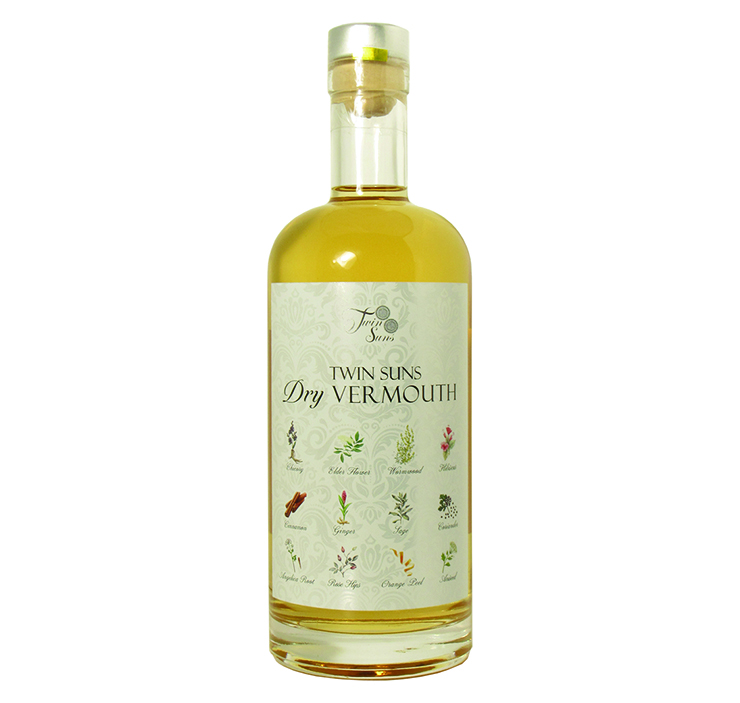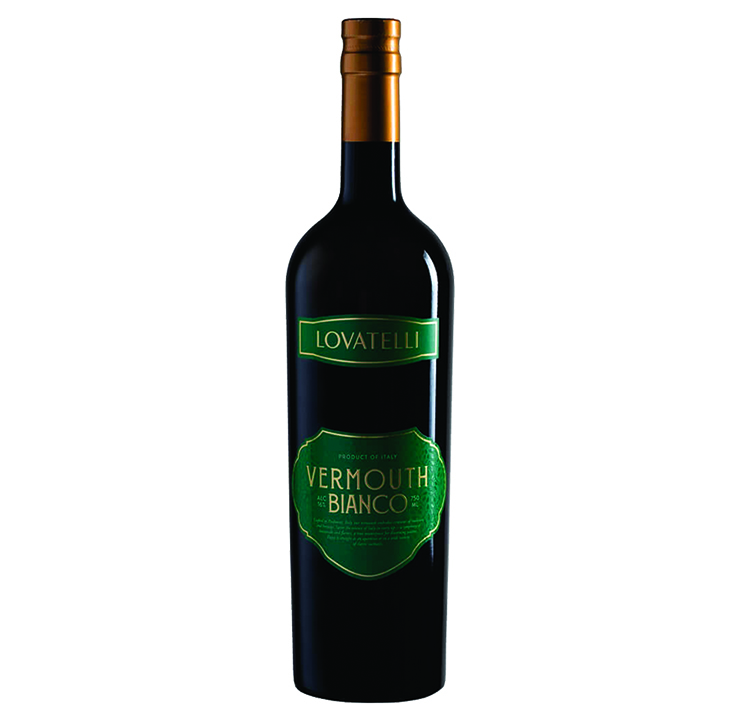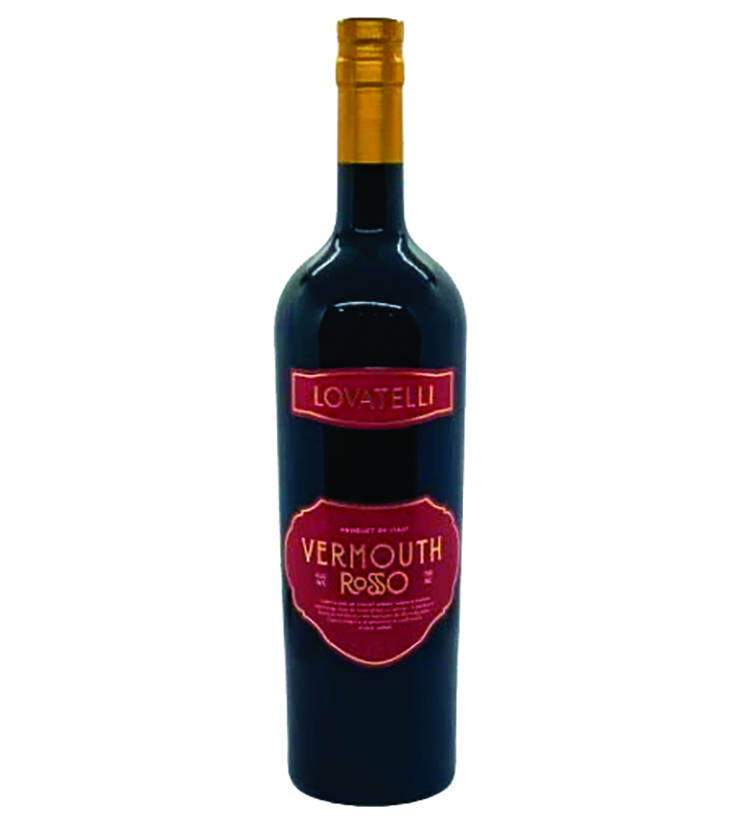Vermouth, a botanical-infused fortified wine, is a key ingredient in so many classic cocktails—such as the martini and the Manhattan—has long been made kosher by some of the world’s leading producers, such as Martini & Rossi and Cinzano. Unfortunately, those kosher versions have never been sold in this country.
Really good kosher vermouth, until very recently, had been hard to find. When I became interested in cocktails in the 1990s, I found Kedem Vermouth, and briefly Carmel Vermouth. Both were passable, and I will still sometimes use Kedem Vermouth, but when compared to the kosher vermouths made in Italy that I’ve tried in Israel, France, Canada and elsewhere, they just were not the same. So ever since then, whenever I’ve traveled abroad, if possible, I’d bring back kosher vermouth. I’ve even on occasion tried to make my own homemade vermouth.
Those days have passed. First, in 2022, Jonathan Hajdu introduced his idiosyncratic but very tasty rosé vermouth, and not long after came Dalton’s Dry Vermouth, as well as a limited amount of Martini & Rossi’s kosher Extra Dry Vermouth being sold in New Jersey and New York. And in the past few weeks a trio of new kosher vermouths has hit the market, one in each of the classic styles—dry, bianco (sweet white) and rosso (sweet) red, all three of which make some very tasty classic cocktails.

Twin Suns Dry Vermouth is made in Oregon by Steve Anderson, the winemaker at Eola Hills Winery in Willamette Valley. Anderson also makes the hugely popular Twin Suns Reserve Oregon Pinot Noir. This dark straw-amber colored vermouth is made using a combination of 12 botanicals, all of which are listed on the bottle. The bouquet is sweet, redolent of honeysuckle and tangerine, with a herbal bitterness in the background. While the bouquet may be sweet, the taste is just off-dry, and the botanicals give it a potent level of bitterness. Look for chicory and wormwood playing against a nice note of citrus. Clearly created with cocktails in mind, this vermouth is too bitter to be enjoyed on its own as an apéritif, but it works very well in an Old Pal Cocktail, and also makes a reasonably good dry martini. Score B+. $29.99.
Lovatelli, Bianco Vermouth: Made in the Piedmont region of Italy, where Italy’s largest vermouth producers—Martini & Rossi and Cinzano—are located, this light-straw-colored vermouth has flavors and aromas of coriander seed, orange peel, vanilla and cardamom. Lightly syrupy, this honey-sweet vermouth has a nice note of herbal bitterness on the back of the palate. Enjoyable on its own as an apéritif, or in cocktails, this vermouth would make a good Algonquin Cocktail, or a good pre-Prohibition style martini. Score A-. $25.99.
Lovatelli, Rosso Vermouth: Like most rosso vermouths, this vermouth was most likely made from a sweet white wine (my guess would be Muscat Blanc, the grape used in Muscato) mixed with caramelized sugar, which imparts a ruddy-brown color more akin to the color of Coca-Cola, than the color of a red wine. Look for a bouquet of orange zest, lemon verbena and fennel, with a whiff of caramel. The flavor has elements of orange, caramel, vanilla and something reminiscent of a lemon-flavored hard candy, all playing against a light but complex note of bitterness on the finish. All in all, this vermouth has exactly what one looks for in a well-made rosso. Drink it as an apéritif, or try it in either a Manhattan or a Negroni. Score A-. $25.99.
Below are recipes for six classic cocktails—two cocktails utilizing each type of vermouth—that can all be easily made in but a few minutes.
Old Pal Cocktail
Invented in Paris in the 1920s, this whiskey-based play on the Negroni is first found in the pages of Harry MacElhone’s 1927 book “Barflies and Cocktails.” MacElhone, the longtime proprietor of Harry’s New York Bar in Paris, credits the drink’s invention to “Sparrow: Robertson, sporting editor of the New York Herald, Paris.
- 2 tablespoons rye whiskey (Rittenhouse is my preferred brand, but others will work as well.)
- 2 tablespoons Twin Suns Dry Vermouth
- 2 tablespoons Italian bitter red liqueur (see note below)
Add ice water to a stemmed cocktail glass, in order to chill the glass. Add the ingredients to a mixing glass, pint glass or the base of a cocktail shaker, add ice and stir well. Pour out the ice water and strain the cocktail into the chilled cocktail glass.
Dry Martini
This most classic of cocktails is the Prohibition-era descendant of the 19th-century martini. As vermouth and bitters became scarce during the dark days of prohibition, bartenders reduced the amount of vermouth, and altogether dropped the bitters that had heretofore been a part of the martini.
- ¼ cup + 2 tablespoons Plymouth or London Dry Gin
- 1 tablespoon Twin Suns Dry Vermouth
- 3 green olives (garnish)
Add ice water to a stemmed cocktail glass, in order to chill the glass. Add the gin and vermouth to a mixing glass, pint glass or the base of a cocktail shaker; add ice and stir well. Pour out the ice water and strain the cocktail into the chilled cocktail glass. Add the olives, either separately or all together speared on a toothpick.
Algonquin Cocktail

Dating back to the early 20th century, this has long been the house cocktail of Manhattan’s Algonquin Hotel. At about the time that this cocktail was likely invented, a daily gathering of literary wits, eventually known as the Algonquin Round Table, was starting to meet at the hotel. Whenever I drink an Algonquin, I like to imagine quaffing it with the likes of Dorothy Parker or H.L. Mencken. While traditionally made with dry vermouth, I prefer this with either bianco vermouth or a mixture of bianco and dry.
- ¼ cup rye whiskey (Rittenhouse is my preferred brand, but others will work as well.)
- 2 tablespoons Lovatelli Bianco Vermouth (For a dryer cocktail substitute half with Twin Suns Dry Vermouth.)
- 2 tablespoons pineapple juice (Juice from a tin is OK in this cocktail.)
- A dash of Angostura Aromatic Bitters or Fee Brothers Peach Bitters (Each adds a different accent to the cocktail. Try each and see which you prefer.)
- A wedge of pineapple (optional as a garnish)
Add ice water to a stemmed cocktail glass, in order to chill the glass. Add all the ingredients, save the pineapple wedge, to a mixing glass, pint glass or the base of a cocktail shaker; add ice and stir well. Pour out the ice water and strain the cocktail into the chilled cocktail glass. Add the pineapple wedge as a garnish if using.
Pre-Prohibition Martini Cocktail
There are numerous theories as to the origins of the martini—lengthy scholarly articles have been written on the subject. While its origins may be unclear, what is clear is that by the late 1880s it was a popular cocktail. There is no exact original recipe for the martini, but this is a typical recipe from the turn of the 20th century, and one that I have used for years.
- ¼ cup + 2 tablespoons Plymouth or London Dry Gin (I really like Plymouth Gin in this cocktail.)
- 2 tablespoons Lovatelli Bianco Vermouth
- A dash of Angostura Orange Bitters or Fee Brothers Orange Bitters
- A strip of lemon zest as garnish
Add ice water to a stemmed cocktail glass, in order to chill the glass. Add the gin, vermouth and bitters to a mixing glass, pint glass or the base of a cocktail shaker; add ice and stir well. Pour out the ice water and strain the cocktail into the chilled cocktail glass. Add the lemon zest as a garnish.
Manhattan Cocktail

Legend has it that this cocktail was invented at the Manhattan Club in New York City in 1876, where it was invented by Iain Marshall for a banquet hosted by Lady Jennet Churchill Jerome (future mother of Sir Winston Churchill) in honor of presidential candidate Samuel J. Tilden (who would go on to win the popular vote but lose the electoral vote). The recipe has not changed much in the past 150 years, except in arguments about what whiskey to use: Some like rye, others bourbon, and still others like a mixture of the two. However you make it, it’s a very tasty drink.
- ¼ cup whiskey—bourbon, rye or a mixture of the two, to taste
- 2 tablespoons LovatellI Rosso Vermouth
- 1 dash of Angostura Aromatic Bitters
- 1 Maraschino cherry (Luxardo brand please) or brandied cherry
Add ice water to a stemmed cocktail glass, in order to chill the glass. Add the whiskey and vermouth to a mixing glass, pint glass or the base of a cocktail shaker; add ice and stir well. Pour out the ice water and strain the cocktail into the chilled cocktail glass. Drop in the cherry.
The Negroni
The Negroni is one of the few classic cocktails whose origins are well documented: One day in 1919 Count Camillo Negroni—yes, he was a real hereditary count—walked into Caffé Casoni in Florence. The count was a regular habitue of the Caffé, and his drink of choice was the Americano, a cocktail consisting of Campari, sweet vermouth and club soda. On this particular day the count wanted something stronger. So he asked Fosco Scarselli, the bartender, to fortify his Americano with some gin. Scarselli swapped out the club soda for gin, and the Negroni was born. Within months the Negroni was an international hit and has been one ever since. This bittersweet cocktail is so balanced, refreshing and easily quaffable that its popularity is easy to understand.
- 2 tablespoons London Dry Gin (My personal choice is Boodles.)
- 2 tablespoons Lovatelli Rosso Vermouth
- 2 tablespoons Italian bitter red liqueur (See note below.)
- 1 orange zest twist as a garnish
Fill a tumbler with ice, add ingredients and stir. Garnish with an orange zest twist.
Note on Italian bitter red liqueurs: Campari is the chief liqueur in this category, however, until 2006 it was not available in a kosher formulation. It can now be found kosher in both Israel (where it can be found kosher lePesach) and Europe. A good alternative that is available in the U.S. under kosher supervision is Luxardo Bitter Rosso, which is certified kosher by the London Beth Din.









